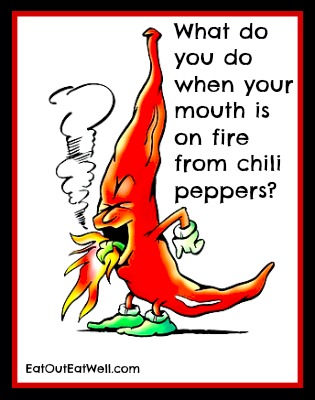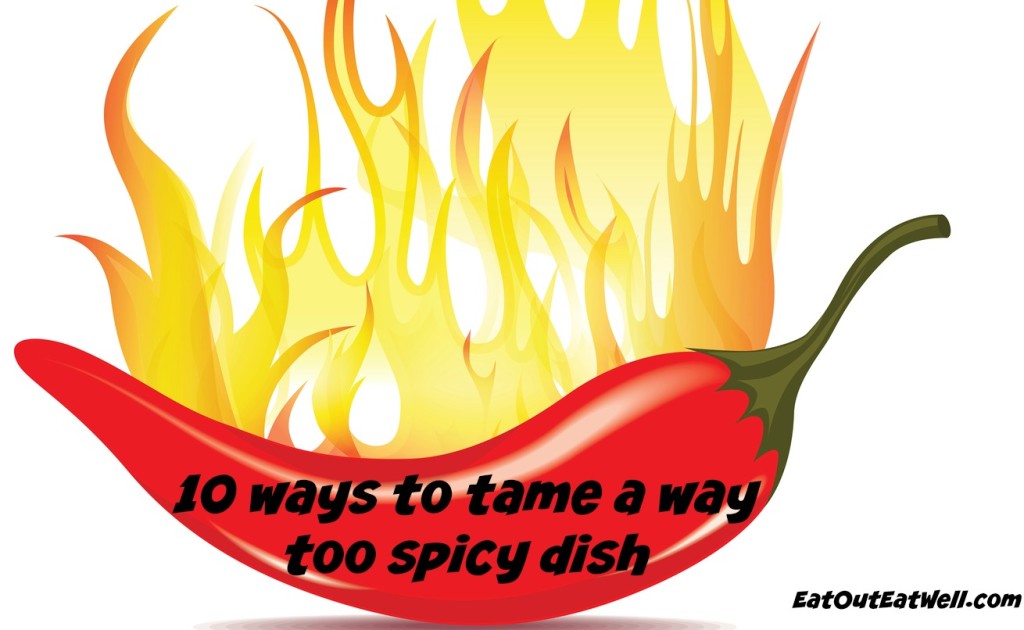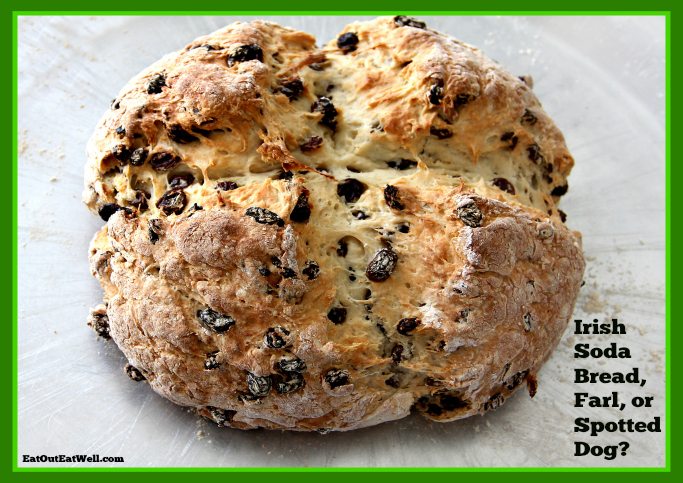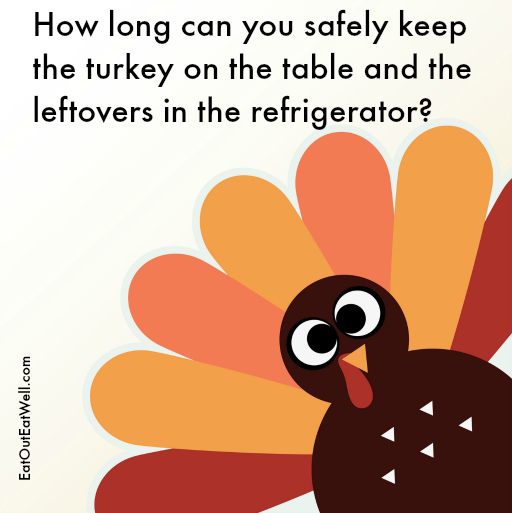I was in a restaurant that specializes in chili – hot, hotter, and hottest. Four large thirty-something guys were sitting at the table next to mine. One guy ordered, “hottest,” with an “I can handle it, no problem” look on his face.
Shortly after this big, burly guy dug into his chili he was sitting glassy eyed, rivulets of sweat dripping off of his bald head, practically unable to speak. The waitress, obviously having seen this happen before, came running over with a glass of milk with orders to “drink up.”
Have you ever had a similar reaction to very spicy food — maybe even from something from your own kitchen when you got a little too heavy-handed with the chili powder? Or perhaps, like this guy, from being a little too macho and ordering “hottest” – despite warnings from the waitstaff.
What Causes The Burn?
Capsaicin is mostly responsible for the “heat” in chili peppers. The amount in different kinds peppers varies widely. Environmental factors and the maturity of the pepper also affect the “burn” factor.
Chiles grown in hot dry climates tend to be a little hotter and the capsaicin content in a pepper is the highest when peppers reach full maturity. Habanero peppers are always extremely hot because of their high capsaicin content but ancho and paprika chili peppers can be as mild as a bell pepper.
How To Tame The Flame
What do you do when your mouth is sending a five-alarm signal, your face is on fire, and you’re sweating enough to water every plant in the room?
To stop the flames in your mouth you need to neutralize the burning heat from the capsaicin that binds to your taste buds. Remember that you want to neutralize the capsaicin, not just make your mouth feel better — although that’s also an objective.
Solutions
- The most common flame relievers are full fat dairy, acid, and sugar – although some people also swear by nut and seed butters (peanut, almond, tahini). They may all have some degree of effectiveness.
- Ice and water will feel pretty good, but they’re only a temporary feel-good fix. The burning pain will come roaring back. Capsaicin is soluble in both alcohol and fat so full fat dairy and alcohol are possible solutions.
- Neutralizing the capsaicin will be the most effective. How do you do that? The most common things to counteract the heat of chilies are full fat dairy, acids, and sugar. Some people also swear by nut and seed butters (peanut, almond, tahini). They may all have some degree of effectiveness.
- Capsaicin is soluble in alcohol and fat, and sometimes beer is suggested as a solution because the alcohol will help to neutralize the capsaicin molecules. Since beer is about 95% water it won’t really neutralize the capsaicin clinging to your tongue. The harder stuff might help but you’d have to drink a lot of it and you’d end up feeling no pain for other reasons.
- Acid can cut through the heat so try vinegar, lemon or lime juice, or anything acidic that doesn’t mess with the taste of your food. Now you know why you often see lemon or lime wedges served with spicier food. Gives beer with lime new meaning, doesn’t it?
- High fat dairy products like milk, cheese, sour cream, yogurt, and ice cream will coat your mouth and can break the bonds capsaicin forms with the nerve endings – and, since they’re cold, they feel pretty good, too. There’s a reason that spicy Mexican food is often served with sour cream and cheese!
- Sugars bind to pain receptors more readily than capsaicin so sweet things might work, too. Sugar, fruit, honey, molasses, even carrots have all been used. Highly sweetened non-carbonated drinks may work. Try some sweet tea. Hoisin may work for Asian dishes or Lassi (sweet and dairy combination) if you’re in an Indian restaurant. Have some fruit for dessert – it’s cold and sweet and the more acidic fruit, like citrus and pineapple, add another layer of potential pain relief.






